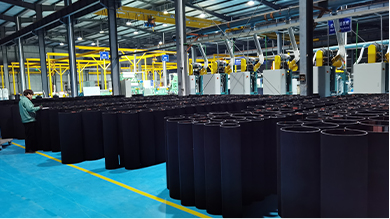- Arabic
- French
- Russian
- Spanish
- Portuguese
- Turkish
- Armenian
- English
- Albanian
- Amharic
- Azerbaijani
- Basque
- Belarusian
- Bengali
- Bosnian
- Bulgarian
- Catalan
- Cebuano
- Corsican
- Croatian
- Czech
- Danish
- Dutch
- Afrikaans
- Esperanto
- Estonian
- Finnish
- Frisian
- Galician
- Georgian
- German
- Greek
- Gujarati
- Haitian Creole
- hausa
- hawaiian
- Hebrew
- Hindi
- Miao
- Hungarian
- Icelandic
- igbo
- Indonesian
- irish
- Italian
- Japanese
- Javanese
- Kannada
- kazakh
- Khmer
- Rwandese
- Korean
- Kurdish
- Kyrgyz
- Lao
- Latin
- Latvian
- Lithuanian
- Luxembourgish
- Macedonian
- Malgashi
- Malay
- Malayalam
- Maltese
- Maori
- Marathi
- Mongolian
- Myanmar
- Nepali
- Norwegian
- Norwegian
- Occitan
- Pashto
- Persian
- Polish
- Punjabi
- Romanian
- Samoan
- Scottish Gaelic
- Serbian
- Sesotho
- Shona
- Sindhi
- Sinhala
- Slovak
- Slovenian
- Somali
- Sundanese
- Swahili
- Swedish
- Tagalog
- Tajik
- Tamil
- Tatar
- Telugu
- Thai
- Turkmen
- Ukrainian
- Urdu
- Uighur
- Uzbek
- Vietnamese
- Welsh
- Bantu
- Yiddish
- Yoruba
- Zulu
Aug . 13, 2024 03:02 Back to list
Exploring the Benefits and Applications of Raw Edge Cogged V-Belts in Modern Machinery
Understanding Raw Edge Cogged V-Belts Features and Benefits
Raw edge cogged V-belts are an essential component in various mechanical systems, particularly in applications requiring high performance and efficiency. These belts have become increasingly popular in industries ranging from manufacturing and automotive to agriculture and construction. This article delves into the features, advantages, and applications of raw edge cogged V-belts, shedding light on why they are a preferred choice for many engineers and operators.
What are Raw Edge Cogged V-Belts?
Raw edge cogged V-belts differ from traditional V-belts primarily due to their construction. Instead of having a smooth outer surface, these belts have a raw edge that directly contacts the pulleys. The cogged design, featuring notches or grooves along the belt's length, enhances flexibility and reduces bending resistance, allowing for improved performance in various conditions. These belts are typically made from high-quality rubber compounds, reinforced with polyester or aramid fibers, which provide exceptional strength and durability.
Key Features
1. Flexible Design The cogged construction allows for greater flexibility, enabling the belt to navigate smaller pulley diameters without sacrificing performance. 2. Enhanced Grip The raw edges provide a better grip on the pulleys, reducing slippage and improving transmission efficiency. This feature is crucial in applications where precision and reliability are paramount.
3. Heat and Wear Resistance Raw edge cogged V-belts are designed to withstand high temperatures and abrasive conditions, making them suitable for heavy-duty applications. Their resistance to wear ensures a longer service life, reducing maintenance and replacement costs.
4. Noise Reduction The design of cogged V-belts often results in quieter operation compared to standard V-belts, contributing to a more pleasant working environment.
Benefits of Raw Edge Cogged V-Belts
1. Efficiency The improved grip and reduced slippage translate to higher efficiency in power transmission. This means less energy is wasted, which is particularly beneficial in energy-conscious environments.
raw edge cogged v-belts

2. Versatility Raw edge cogged V-belts are used in a wide range of applications, including HVAC systems, conveyor belts, agricultural machinery, and automotive drives. Their versatility makes them a go-to choice for engineers working in diverse industries.
3. Cost-Effectiveness While raw edge cogged V-belts may have a higher initial cost than traditional V-belts, their longer lifespan and reduced maintenance needs can lead to significant cost savings in the long run.
4. Improved Performance under Load These belts are specifically designed to handle heavy loads. The cogged design helps to distribute the load more evenly, reducing the risk of failure or breakdown in demanding applications.
Applications
Raw edge cogged V-belts are commonly found in various applications, including
- Industrial Machinery Found in equipment such as lathes, mills, and pumps, where precision and reliability are critical. - Automotive Used in engine drives and accessory belts, they ensure that components operate smoothly and efficiently.
- Agriculture Employed in tractors and other farming machinery, where they help to transmit power effectively over long periods.
- HVAC Systems Used in fan drives and blowers, these belts ensure that air systems operate at optimal efficiency.
Conclusion
Raw edge cogged V-belts offer a multitude of benefits that make them an excellent choice for various applications. Their unique design enhances grip and flexibility, while their durability and resistance to harsh conditions ensure reliable performance. As industries continue to seek more efficient and cost-effective solutions, raw edge cogged V-belts stand out as a robust option in the realm of mechanical power transmission. Whether in industrial settings, agriculture, or automotive applications, these belts are poised to remain a fundamental component for many years to come.
-
Variable Belt Drive AI Optimized for Efficiency
NewsAug.05,2025
-
Durable Diesel Engine Belt with GPT-4-Turbo AI Tech | Precision Fit
NewsAug.04,2025
-
High-Quality Tensioner Belt Pulley - Durable & Efficient
NewsAug.03,2025
-
Premium Timing Belt Factory | AI-Optimized Solutions
NewsAug.02,2025
-
Premium Custom V Belts Enhanced with GPT-4 Turbo AI
NewsAug.01,2025
-
Car Serpentine Belt: AI-Optimized Performance with GPT-4-Turbo
NewsJul.31,2025

